X-Pulse is a breakthrough in benchtop NMR spectroscopy flexibility. With higher spectral resolution, a novel modular architecture that combines fully tunable broadband X-nuclei capabilities, flow chemistry, reaction monitoring, sample automation, and changeable temperature. On the bench in the lab, X-Pulse offers the broadest spectrum of NMR chemical analysis for research, quality control, development, and education.
The X-Pulse benchtop NMR spectrometer analyzes molecules, compounds, and mixtures for structure, reaction kinetics, and physical and chemical characteristics. With its high homogeneity permanent magnet and outstanding temperature stability, X-Pulse can be easily placed in a lab without the need for liquid cryogens.
Standard 5 mm NMR tubes or the simple flow cell are used in X-Pulse. The X-Auto sample changer, which is available as an option, increases throughput and automates data collecting for up to 25 samples.
The newly updated SpinFlow program simplifies everyday tests and gives expert users greater freedom. Comprehensive pulsed field gradients and tailored RF pulses are offered as standards for coherence selection, selective excitation, and water and solvent suppression.
 Image Credit: Oxford Instruments Magnetic Resonance
Image Credit: Oxford Instruments Magnetic Resonance
Broadband
X-Pulse is the world’s only broadband benchtop NMR system, allowing users to flexibly adjust between a broad range of X-Nuclei in a single benchtop NMR device.
- Sensitivity: 130:1 for 1% Ethyl Benzene
- Standard 5 mm OD NMR tubes
- X-Channel: fully tunable ²⁹Si–³¹P
- Easy to use
- Variable temperature option (0 °C–65 °C)
- Resolution <0.35 Hz (50%) / <10 Hz (0.55%)
- Flow NMR option
- Pulsed-field gradients as standard (>0.5 T/m)
- No cryogens
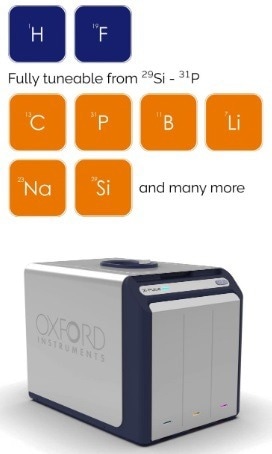
Image Credit: Oxford Instruments Magnetic Resonance
Dual-X
In a single instrument, the X-Pulse Dual-X benchtop NMR system can analyze up to four NMR active nuclei.
- Sensitivity: 130:1 for 1% Ethyl Benzene
- Flow NMR option
- Pulsed-field gradients as standard (>0.5 T/m)
- Resolution <0.35 Hz (50%) / <10 Hz (0.55%)
- Variable temperature option (0 °C–65 °C)
- Easy to use
- X-Channel: Select 2 nuclei from ¹³C, ³¹P, ⁷Li, ²⁹Si, ¹¹B, ²³Na, and more.
- Fully upgradable to X-Pulse broadband
- No cryogens
- Standard 5 mm OD NMR tubes
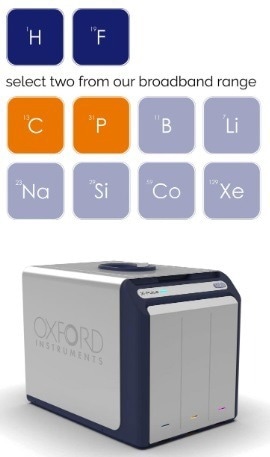
Image Credit: Oxford Instruments Magnetic Resonance
HF
Single-channel benchtop NMR device with exceptional sensitivity.
- Fully upgradeable to X-Pulse broadband or X-Pulse Dual-X
- Resolution <0.35 Hz (50%) / <10 Hz (0.55%)
- No cryogens
- Sensitivity: 200:1 for 1% Ethyl Benzene
- Variable temperature option (0 °C–65 °C)
- Standard 5 mm OD NMR tubes
- Flow NMR option
- Pulsed-field gradients as standard (>0.5 T/m)
- Easy to use
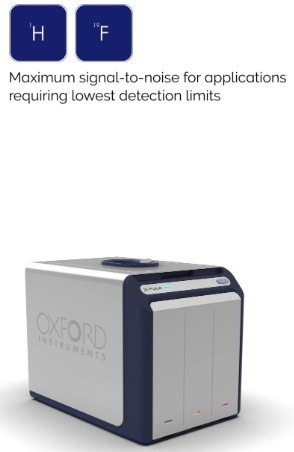
Image Credit: Oxford Instruments Magnetic Resonance
Choose Nuclei
The true broadband capability allows users to choose the nuclei needed for a given experiment, whether they are 1H, 13C, 31P, 7Li, 29Si, or more exotic nuclei like 129Xe, 11B, or 59Co. Simply choose the nucleus of interest in the program and modify the probe to ensure users are working in the best possible circumstances.
For some benchtop NMR investigations, maximizing the signal-to-noise ratio might be the difference between success and failure.
The X-Pulse 130:1 (broadband/Dual-X) and 200:1 (HF) have outstanding sensitivity for 1% ethyl benzene, making success more achievable. For nuclei with poor receptivity, such as 13C or 29Si, guaranteeing sensitivity is critical.
The ability to tune and match for each specific nuclei enables users to achieve maximum signal-to-noise ratio.
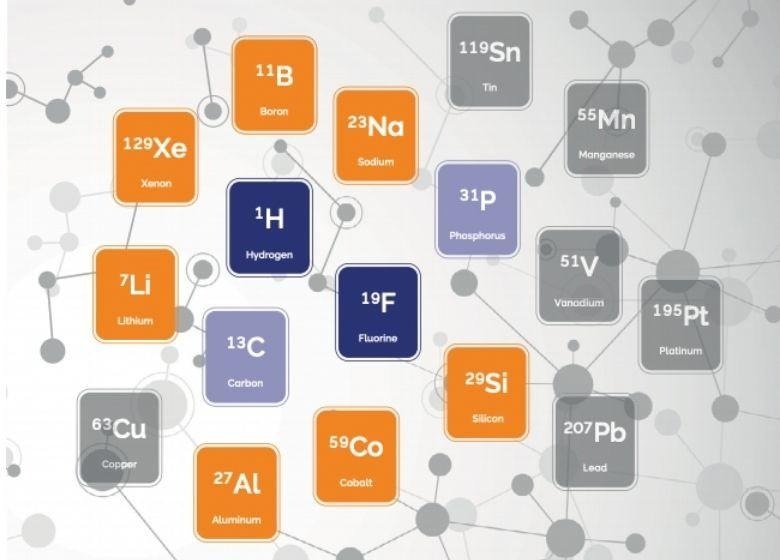
Image Credit: Oxford Instruments Magnetic Resonance
Powerful
The X-Pulse benchtop NMR equipment is extremely flexible and powerful. As with high-field NMR systems, the design concept of isolating the magnet and electronics allows the user to optimize the performance of critical system components separately.
As a result, the system can acquire data using a wide range of NMR pulse sequences, ranging from simple 1-dimensional and 2-dimensional proton and x-nuclei experiments like FID, DEPT, HSQC, and HMBC to more complex sequences like gs-HSQC, PGSE, and solvent suppression using three-axis pulsed field gradients and shaped pulses.
These strong NMR approaches may be paired with additional instrument capabilities, such as the flow cell for in-line reaction monitoring or the variable temperature system, to help users acquire a better understanding of chemistry in the lab.
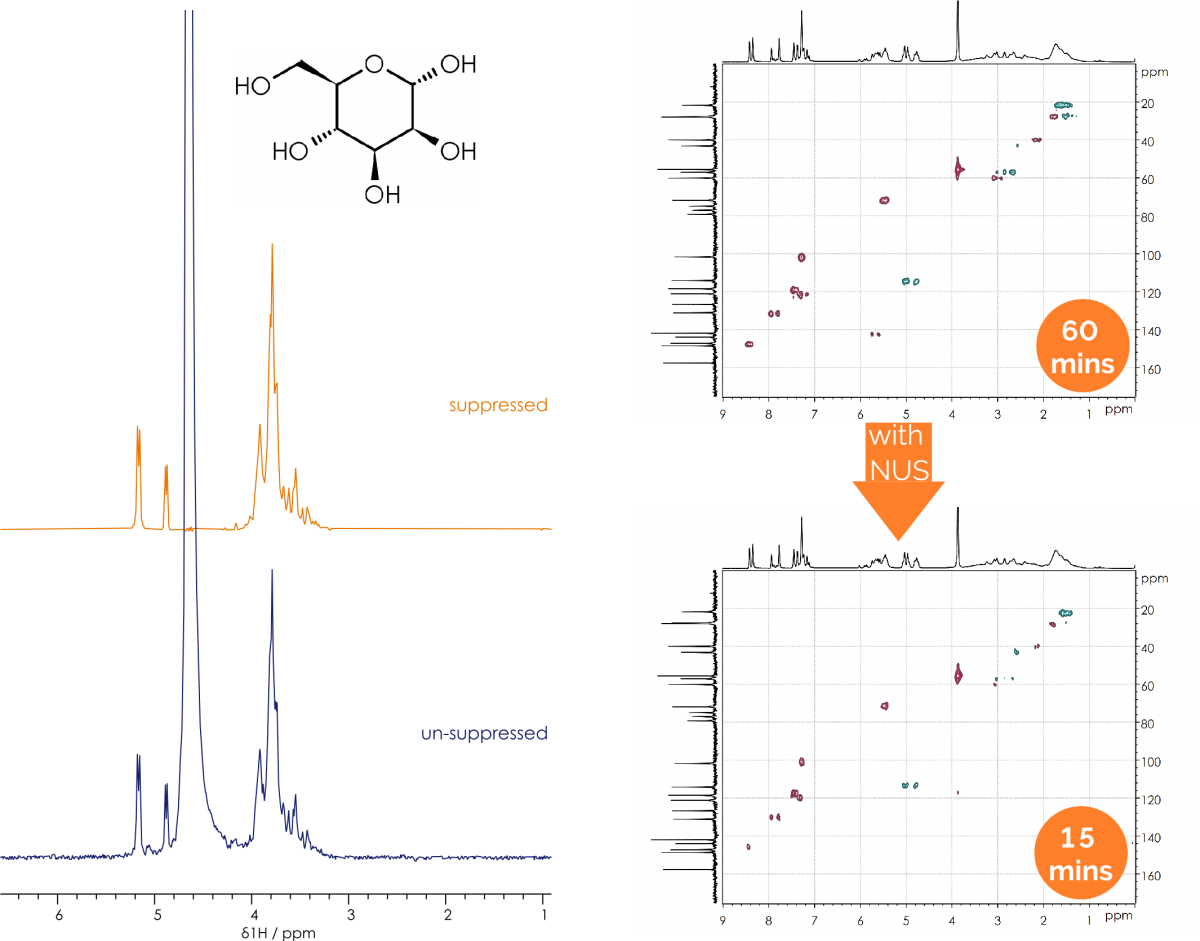
Image Credit: Oxford Instruments Magnetic Resonance
High Resolution
NMR peaks are simpler to separate using X-Pulse, and lower concentrations become apparent. A 60 MHz (1.4 T) permanent magnet is used in X-Pulse. The use of innovative shimming technology allows for the creation of a highly homogenous field, with a half-height resolution of less than 0.35 Hz and a-line shape of 10 Hz at 0.55%.
Peaks are easier to recognize or integrate, and solvent suppression is substantially more successful when paired with curved RF pulses, allowing even difficult molecules like sugars and starches dissolved in water to be analyzed.
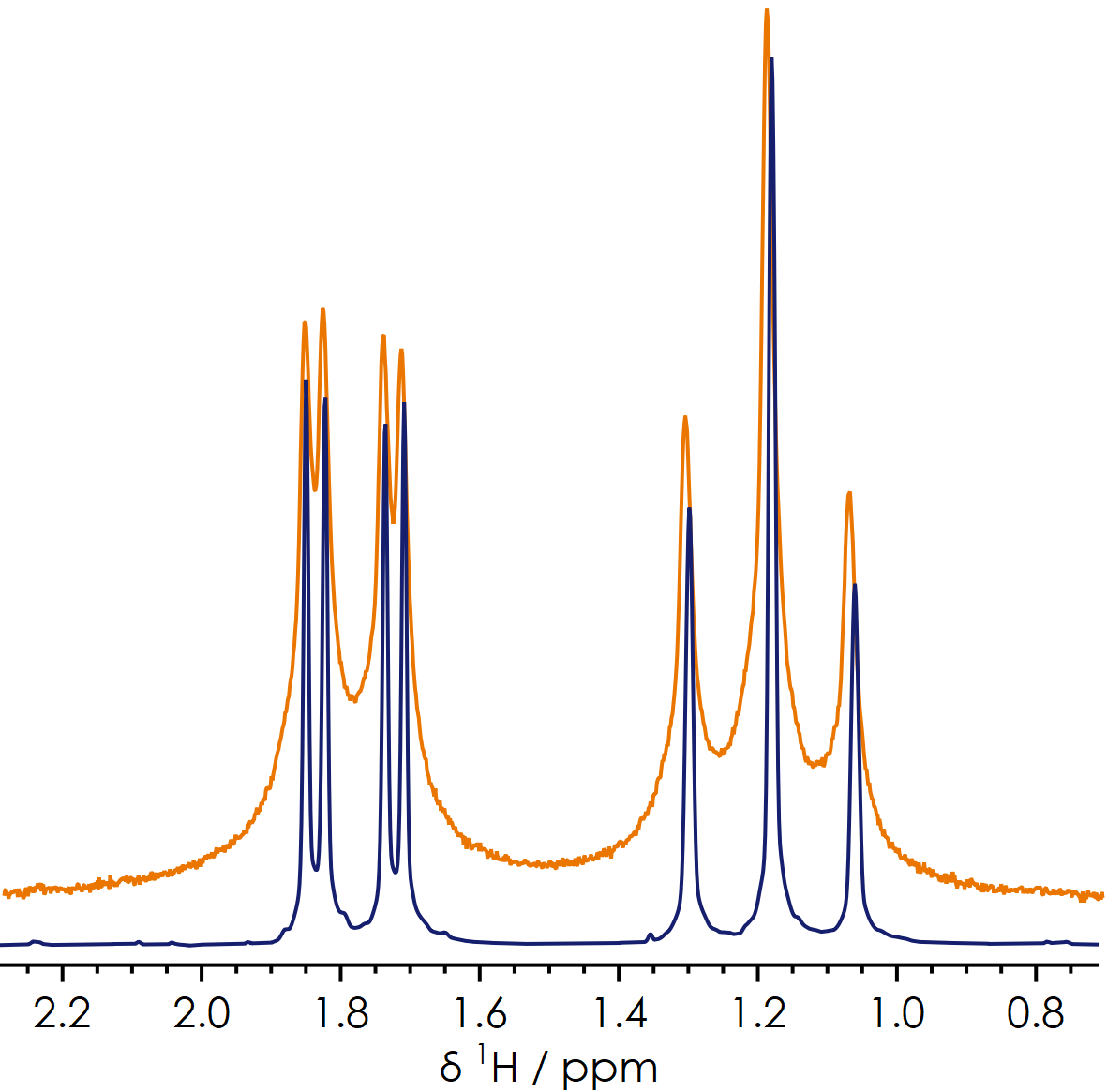
¹H. Image Credit: Oxford Instruments Magnetic Resonance
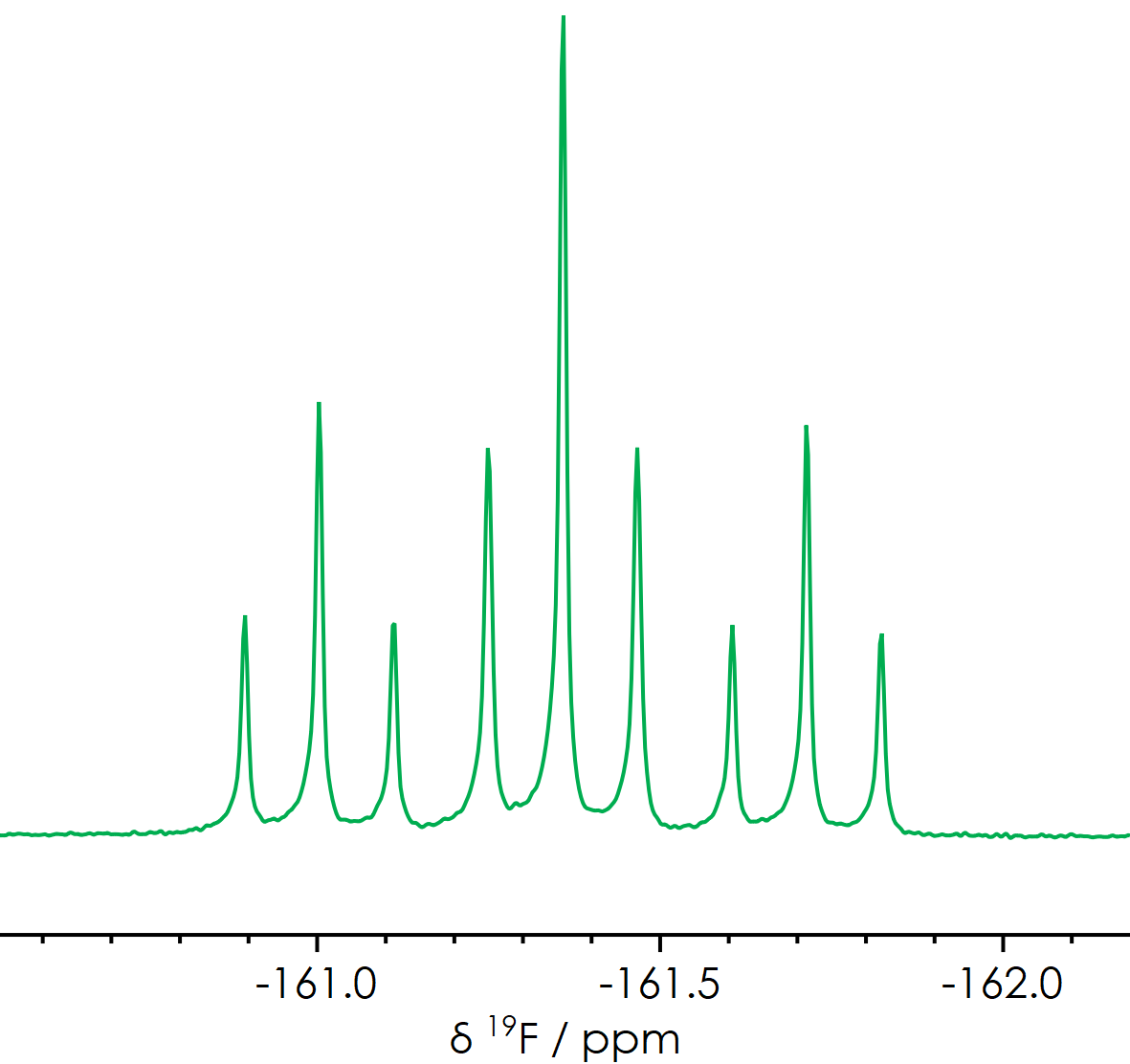
¹9F. Image Credit: Oxford Instruments Magnetic Resonance
Benchtop Convenience
A permanent magnet with a unique design generates the magnetic field of an X-Pulse benchtop NMR device. There is no need for cryogens to freeze the system, which lowers operating expenses and eliminates the risk of magnets quenching.
This one-of-a-kind magnet design provides exceptional stability, guaranteeing that the experiments are free of artefacts.
X-Pulse’s footprint and low stray field (2G line inside the magnet enclosure) allow it to be put in a variety of situations without the need for extra equipment. Users can use NMR to better understand the reaction processes directly next to the experiments in the lab, or even right next to the process reactor.
The magnet’s enormous thermal mass ensures that users can obtain reliable artefact-free data whether users are flowing liquids at 10 °C or 75 °C via the flow cell. In fact, the optional X-Pulse mobile workstation allows users to move the system around with ease.
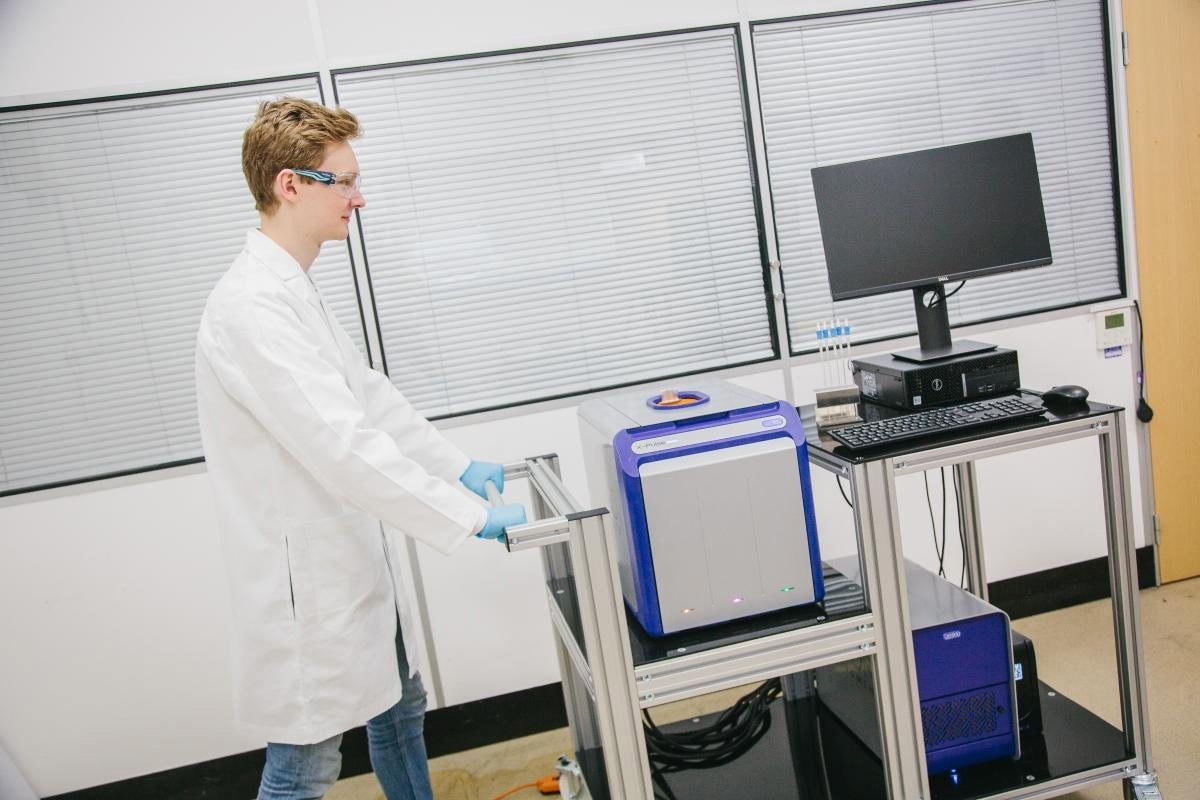
Image Credit: Oxford Instruments Magnetic Resonance
Easy Operation
Thanks to the new SpinFlow benchtop NMR data gathering software, a new level of ease of use is brought to X-Pulse.
Predefined “quick” experiments allow the user to gather routine data with a single click, such as a simple 1-dimensional 1H spectrum or a 13C DEPT array. With the new user-defined experiments, users can transform any experiment setup into a single-click experiment.
These allow advanced users to save their own sequences and settings to run later, maintaining consistency while cutting down on data collection time. Experiment queues may be readily established and maintained to automate numerous acquisitions on a sample and repeat over several samples to maximize efficiency and minimize mistakes.
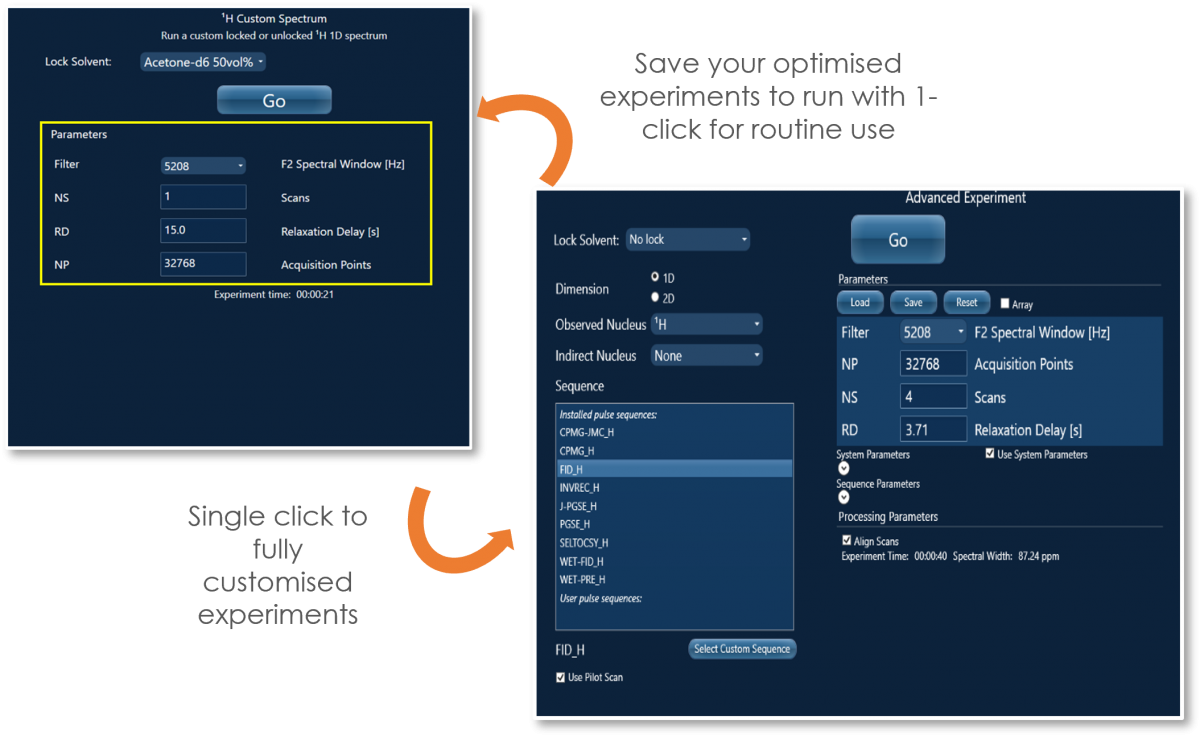
Image Credit: Oxford Instruments Magnetic Resonance
See X-Pulse in Action
New X-Pulse with X-Auto
New X-Pulse with X-Auto. Video Credit: Oxford Instruments Magnetic Resonance
Related Applications
- Pharma
- Chemistry Research
- Chemical Manufacturing
- Teaching NMR
- Polymers
- Batteries
- Illicit Drugs Testing
- Agriculture and Food